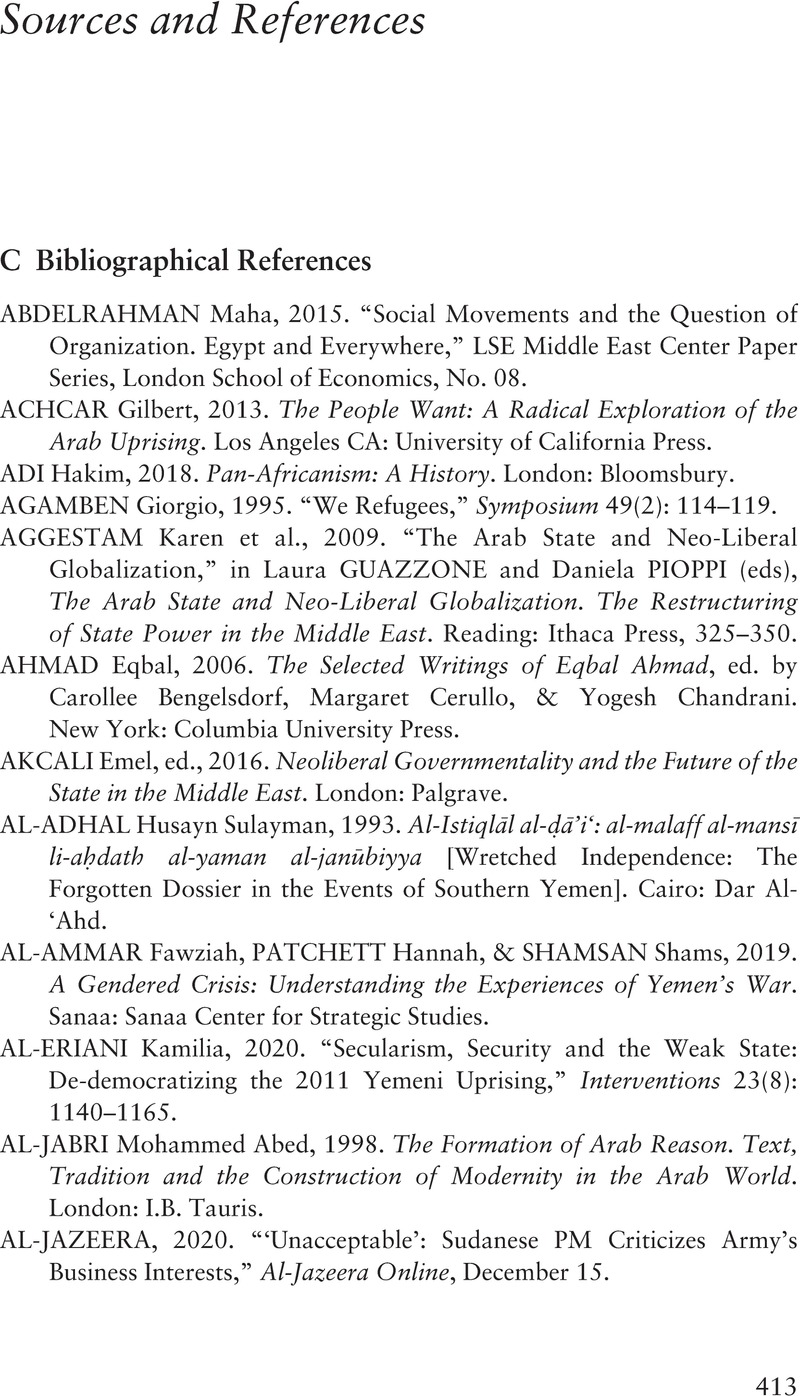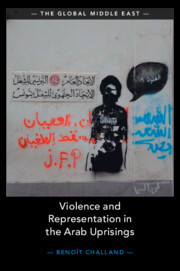Book contents
- Violence and Representation in the Arab Uprisings
- The Global Middle East
- Violence and Representation in the Arab Uprisings
- Copyright page
- Dedication
- Contents
- Maps
- Figures
- Tables
- Acknowledgments
- Prolegomenon: A Two-Layered Book
- Introduction
- Part I The Making of Latent Citizenship
- Part II Informal Revolutionary Practices (2011–2014)
- Part III Embattled Revolutionary Legacies (2014–2021)
- Sources and References
- Sources and References
- Index
- References
Sources and References
Published online by Cambridge University Press: 02 February 2023
- Violence and Representation in the Arab Uprisings
- The Global Middle East
- Violence and Representation in the Arab Uprisings
- Copyright page
- Dedication
- Contents
- Maps
- Figures
- Tables
- Acknowledgments
- Prolegomenon: A Two-Layered Book
- Introduction
- Part I The Making of Latent Citizenship
- Part II Informal Revolutionary Practices (2011–2014)
- Part III Embattled Revolutionary Legacies (2014–2021)
- Sources and References
- Sources and References
- Index
- References
Summary

- Type
- Chapter
- Information
- Violence and Representation in the Arab Uprisings , pp. 413 - 446Publisher: Cambridge University PressPrint publication year: 2023



